The Italian Larder
Search by alphabet:
A B C D E F G H I J K L M N O P R S T U V W Y Z
Lacerto – See Fish: Mackerel
Ladano– See Fish: Sturgeon, Adriatic
Ladyfingers – See Savoiardi
Lamb (Agnello / Abbacchio / Agnellone / Pecora/ Castrato) (Ovis aries)
Substitutions: kid goat
Lamb is popular in the springtime in northern and central Italy and year-round in the south of Italy. Lamb is particularly important to the cuisine in mountainous areas and islands. Mutton, however, is relatively uncommon.
Buy: Lamb is sold fresh and frozen. The quality of the lamb is determined by three considerations: the race, its feed, and the age. As a consumer, the only part of the selection process which is controllable is the age. While baby lamb is the most prized, it is seasonal and not widely available. Lamb (agnello) is the most consumed category. There is “ pre-sale” (salt marsh lamb) which is also highly prized, and requires lambs to be let to graze near the sea. Lamb should have a decent amount of meat on the bones. Look for rosy flesh which is firm and not soft (unless it is baby lamb). Except for baby lamb, look for meat which does not have much fat. The fat should be white or slightly pink, not crumbly or discoloured.
Types:
Milk-fed lamb / Baby lamb / Hothouse lamb (Agnello di latte / Abbacchio) is a milk-fed lamb (before it has eaten solid food) that is 3 to 4 weeks old. It weighs about 4 to 5 kilos when sold and is sold whole, halved, or quartered. It is very tender and delicately flavoured so should be cooked with other mild flavours.
Spring lamb (Agnello) is 8 to 10 weeks old and weighs up to 8 kilos when sold. It should have predominantly been fed milk. Look for lamb which has lot of meat on the back, has firm meat on the thighs, and has a lot of firm, white to pale pink kidney fat. It can be cut into a rack or chops, leg, shoulder, chump, and loin. The neck, fore shank, and breast are minced or chopped. It is also tender and suitable for spit-roasting.
Lamb (Agnellone) is usually a 6-10 month old lamb, but is definitely less than 1 year old. It should weigh less than 10 kilos and it should have predominantly been fed milk. Look for lamb which has lot of meat on the back, has firm meat on the thighs, and has a lot of firm, white to pale pink kidney fat. It can be cut into rack or chops, leg, shoulder, and loin. The neck, fore shank, and breast are minced or chopped. It has a slightly gamey flavour and is good for braising in stews or for pasta sauce.
Hogget / Mutton (Pecora / Castrato) is a sheep older than 1 year old. A hogget is between 1-2 years of age while mutton is older than this. It has dark meat with a stronger taste. There should not be too much fat. If the sheep is not too old it can still be used for cooking but will have a strong flavour. Castrato is a castrated and fattened male sheep. It has a papery white membrane covering the meat, called a “fell”, which needs to be removed as it is not digestible. To remove the fell, cut into it and slide your knife blade along the fell to separate it from the meat. Mutton is not often eaten in Italy.
Parts of the Spalla / Spallotto:
1. Scrag end of neck and middle neck (Collo)- good for stewing, broth, and braising
2. Shoulder and fore shank (Spalla)- The shoulder is good for roasting and stewing, but fattier than the leg (also juicier), though it can be harder to carve. It can also be minced. The fore shank is tough so needs to be slowly braised.
Parts of the Lombata / Carré:
3. Upper rib and rack of lamb / Loin / Saddle (Carré)- good for roasting, frying, or grilling; can be sold on or off the bone, in a rack or in chops; the upper rib is also called carré or rack of lamb; both sides of the loin may be left attached and then is called sella (Guard of Honour)
4. Breast (Petto)- is a thin, fatty cut which is good for stews or other slow cooking methods. The bony parts can be made into small ribs to barbecue.
Parts of the Coscia / Coscio / Cosciotto:
5. Chump (Sella)- good for roasting
6. Leg / Gigot (Cosciotto / Coscio / Coscia)- good for roasting or grilling; can be sold boned or with the bone. It can be rolled or cooked flat. If the legs are left attached with the chump, this cut is called a barone (baron of lamb).
Store: Meat should be removed from the packaging it was sold in as an airtight container may promote bacterial growth. Lamb should be stored, lightly wrapped in parchment paper or aluminium foil in the refrigerator at 5˚C on a tray to catch any drips. It should be stored on the bottom shelf of the refrigerator so it doesn’t contaminate other food. Lamb mince can be kept in the refrigerator for 1 day. Lamb joints and chops can be kept in the refrigerator for 3 to 5 days.
If your time requirement is longer than this then the lamb can be frozen in thick air-tight freezer bags at – 18˚C and then thawed in the refrigerator (6 to 7 hours per 450 gms), or in a sealed bag immersed in cold water when needed. Lamb mince can be kept in the freezer for 3 to 4 months. Lamb joints and chops can be kept in the freezer for 6 to 9 months. If the meat begins to show signs of grey, white or brown patches on the meat, it is developing freezer burn and is dehydrating. It is still edible but will be dry and not taste nice. Organ meats are more highly perishable and should be consumed within a week of slaughter or purchased frozen.
Prepare: In preparing mutton, it is often covered by a impenetrable white membrane which needs to be removed before cooking. Use a knife to pierce the membrane and then hold the membrane firmly in your hand and run your knife along the membrane to sever it from the meat.
Eat: Whole lamb can be spit-roasted (abbacchio) or roasted (agnello alla carbonara). The lamb shoulder is best stewed (agnello aglassato), stuffed (agnello abbottonato), or braised. The leg is relatively lean so can be larded before roasting. The leg is best roasted (cosciotto d’agnello arrosto), spit-roasted or stewed (agnello in fricassee, agnello al calderotto, and agnello cac’e ova). The breast can be stuffed, rolled, and roasted. The rack is best roasted, grilled (agnello a scottaditto), fried, or deep-fried. Lamb should be served while it is still pink the centre to remain juicy.
| Roasting: | |
| Leg, saddle, loin | 190˚C for 20 minutes per 450 grams |
| Shoulder, rolled breast | 180˚C for 25 minutes per 450 grams |
| Braising: | |
| Leg, shoulder | 160˚C for 2 hours |
| Stewing: | |
| Leg, shoulder | 160˚C for 1.5 hours |
| Cooking temperatures*: | Rare | Medium | Well done |
| Lamb | 55˚C/130˚F | 60-65˚C/140-145˚F | 70˚C/160˚F |
* Place the thermometer in the thickest part of the joint of meat but do not touch any bones. Remove the meat 5˚C below the temperature you are trying to achieve as when you remove the meat from the oven and allow it to rest for 10-15 minutes, the temperature will continue to increase.
Lampone – See Raspberry
Lampuga – See Fish: Mahi- Mahi
Langoustine – See Lobster
Lard (Strutto / Sugna)
Lard is a traditional fat used in cooking all over Italy, although is becoming less used due to health consciousness. Not to be confused with lardo, lard is the soft fat beneath the skin, closest to the meat, whereas lardo is the hard pork fat closest to the skin from the back or back of a pig’s neck.
Buy: Lard is pork fat, which has been rendered in an oven at a low temperature or boiled with water until the water evaporates and the fat is clear. Solids which form during this process are called ciccioli or pork scratchings. The fat is cooled and the impurities sink to the bottom of the pan, and the pure fat is collected and is called lard.
Store: Store in a fully airtight container for no longer than a year . If the lard smells, looks, or tastes off then discard it.
Prepare: No special preparation required.
Eat: It is used in making breads (gnocco fritto), frying meat (pollo in padella alla romana), deep-frying, and in making preserved meats and salamis.
Lardo (Lardo)
Lardo is cured, hard pork fat closest to the skin from the back or back of a pig’s neck, not to be confused with lard (strutto) which is the soft fat beneath this closest to the meat.
Buy: It is sold in rectangular blocks which are at least 3 cm thick. The outside is coated in pepper and other aromatics. The inside is pure white and soft with some light pink or brown. It has a rich perfume and delicate, fresh flavour. If lardo is smoked it is called lardone.
Types:
Lardo bono is bacon or pork fat used to lard joints of meat.
Lardo di Arnad is a prized lardo made in Valle d’Aosta. It is made by curing pork fat in glass, wood or ceramic containers with salt and brine water flavoured with achillea, bay leaves, cinnamon, cloves, juniper berries, nutmeg, pepper, and rosemary. It can be cured for up to a year. Longer cures will also use white wine.
Lardo di Colonnata is a prized lardo from Toscana. It is fresh pork back fat which is layered with salt, pepper, cinnamon, cloves, coriander, garlic, oregano, rosemary, sage, and star anise and preserved in salt brine in marble troughs for a minimum of 6 months.
Lardo di Montefeltro is a prized lardo from the Marche. It is made from the fat from the hindquarters and is salted and weighted for weeks and then dry aged for 3-4 months. It is then cut into pieces and pickled in a concentrated salt and water solution in earthenware pots. They were traditionally also wrapped in hay and stored in wooden chests in well-ventilated storage areas.
Lardo di rosmarino is a lardo which is dry cured with salt and herbs, particularly rosemary, from Piemonte and Liguria. While curing, it is kept cool and massaged every few days for 3 months.
Store: Wrap in a slightly damp cloth, in the bottom of the refrigerator for up to 2 weeks, or wrap in a plastic bag and freeze for 1-2 months.
Prepare: If the lardo is too salty, it can be blanched by placing it in a pan and covering it with cold water. Bring the water to a boil and cook for 5-10 minutes, let cool, and drain. To cut lardo with a knife, you can heat the knife on a flame first to cut more cleanly through the lardo. Lardo can be pounded to a cream or finely chopped with garlic and herbs (lardo battuto) to be used as a condiment, brush on bread, add to stews and broths, or to use in stuffings. It can be finely sliced and served as is or cut into strips (lardelli / bastoncini) to lard joints of meat.
Eat: It can be served sliced finely and served as a starter or is used chopped or sliced as an ingredient in dishes.
Lasagna– See Pasta: Dried Pasta
Latterino – See Fish: Smelt, big-scale sand
Lattuca – See Lettuce
Lattuga – See Lettuce
Lavarello – See Fish: Whitefish, European
Leccia – See Fish: Leerfish
Leccia stella– See Fish: Pompano
Leek (Porro) (Allium amepeloprasum)
Equivalents: 450 grams leeks, trimmed = 4 cups chopped = 2 cups cooked
Substitute: green onion
Leeks are in the onion family but have a more delicate flavour than onions. They are in season from October through March, depending on the variety. Some of the best varieties are winder leeks such as “Caretan”, “Gigante d’Italia”, and “Gigante d’inverno”.
Buy: Leeks should be purchased with the greens attached so it is easier to determine freshness. Look for leeks that are straight and have the greatest proportion of white to green, as it is the white part (porrina) that is edible. The proportion varies with different varieties. If you are using the leeks for broth, this ratio is not important. The white part should be unblemished, unwilted, tender, and plump. If they are bulbous this indicates that they are over-mature which means they may have developed tough or hollow centres. There should be no yellowing to the leek. The green part should not be ripped and look fresh. The winter varieties have more flavour but are tougher whereas the summer varieties are more delicate and tender.
Store: Leeks can be stored in a plastic bag in the vegetable drawer of the refrigerator for a week.
Prepare: If the outer leaves are yellowed or the leek is very large, peel off the outer layers and discard. Cut off the root and cut the leek 5 cm above the white part. The top and the root can be washed and used for soup or broth. Leeks have a lot of sand and dirt between their leaves which needs to be washed out. To chop leeks, cut it up first and then wash. Otherwise, slice lengthwise halfway through the leek, leaving the leaves attached but allowing you to wash in between the lawyers. Place them in a basin of water and soak for 15 minutes. Then hold the leeks gently under running water.
Eat: Leeks are typically boiled and dressed (porri con la besciamella), sautéed, braised, in omelettes, in pastas (tagliatelle al latte), with polenta (polenta e porri, polenta nera con bagna bianca), or used in soups (minestra di riso, porri e bietole), or stews. Leeks pair well with butter, olive oil, cream, Parmigiano-Reggiano cheese, goat cheese, capers, wine, olives, thyme, parsley, saffron, potatoes, fennel, celery, and eggs.
Leerfish– See Fish: Leerfish
Lemon (Limone) (Citrus limonia)
The lemon was probably introduced to Italy by the Arabs in the 9th to 11th centuries. Lemon is rich in vitamin C. Lemon is in season year-round but in particular in the summer (verdelli), winter (primofiore), and spring (bianchetti). Sicilia produces 90% of the lemons in Italy. Notable PGI varieties of lemons include “limone costa d’Amalfi”, “limone femminello del Gargano”, and “limone di Sorrento”.
Buy: Lemon is a citrus fruit which can be large or small with a thick and bumpy skin or thin and smooth skin. As lemons are more abundant during the fall, winter, and spring, producers harvest unripe lemons and put them in cool storage so that they mature slowly for up to 6 months, in order to more evenly spread out the harvest. While lemons do not get sweeter or improve in flavour once picked, they also do not lose much weight or juiciness from long storage or transport. Look for lemons with are heavy for their size and have evenly coloured, smooth, thin, unblemished skins. Thick or rough skins on lemons which are light-weight for their size will lack juice. They should have a vibrant yellow colour to the skin with a moist sheen not a dry, dull light-yellow skin. They should not have bruises, holes, dampness, or soft spots. Buy unwaxed lemons if you need to use the zest, although unwaxed lemons are more prone to moulding so use them quickly. Smooth skinned lemons tend to have more juice.
Store: Yellow lemons can be held at room temperature for up to a week, or in the refrigerator for a month. Green lemons can take a few weeks at room temperature to ripen and turn yellow. Unwaxed lemons should be kept in the refrigerator for 4-5 days.
Prepare: If the lemons are waxed and you want to use the zest then scrub the lemons under cold water to remove the wax. The vitamin C in the lemon juice is destroyed by heat so it is best added at the end of cooking.
Eat: Lemons are used in both savoury and sweet dishes. They are also used to coagulate eggs and milk fats in cheese making. They are used in cooking fruit to retain the shape of the fruit and in soaking water when preparing vegetables that oxidise such as artichokes. Lemon juice is also used to “cook” raw foods such as fish and meat. It is also used to dress salads, vegetables, seafood, fish, and deep-fried food. Lemon is used in drinks (limonata, vino caldo), liqueurs (limoncello), syrups, jams, sorbets, and gelato and is used to flavour cakes, custards, tarts (crostata di limone), and pastry.
Lenticchie – See Bean
Lentil – See Bean
Lesser octopus – See Octopus
Lettuce (Lattuga / Lattuca) (Lactuca sativa)
The name for lettuce in Italian, lattuga, derives from the word for milk, latte, since when the plant is cut, it oozes a white liquid resembling milk. There are hundreds of varieties of lettuce but they tend to be categorised in to three categories (see below under types). For chicory lettuce- see Chicory. Different varieties of lettuce are in season year-round. Lettuce is rich in Vitamins A and C, calcium, iron, and fibre.
Buy: Lettuce is a vegetable which is sold fresh in whole heads or in loose leaves in bags. The best lettuce is sold in heads although the bagged loose-leaf lettuce is more convenient as the leaves are already washed and ready to use. There is an on-going debate about the safety of bagged lettuce due to bacteria present and chemicals used in the packaging. Lettuce should look fresh and crisp. The leaves should not appear wet, wilted, or yellowed.
Types:
Round lettuce / Cabbage lettuce / Head lettuce (Lattuga cappucce) (Lactuca sativa var. capitata) form a crisp, compact head of large, round, concentric green leaves of lettuce with a crisp, light yellow heart. Varieties include butterhead (Regina di Maggio, Cavolo di Napoli, Meraviglia d’inverno, Meraviglia delle quattro stagioni), iceberg / crisp head (Regina dei ghiacci), and Boston (Trocadero) varieties. Different varieties grow in different seasons and some grow year-round.
Romaine lettuce / Cos lettuce (Lattuga romana) (Lactuca sativa var. longifolia) has elongated leaves which can grow up to 50 cm in length. Romaine is in season year-round. Varieties include “Bionda degli ortolani”, “Verde d’inverno”, “Rosso d’inverno”, and “Balon”.
Leaf lettuce / Loose-leaf lettuce / Cutting lettuce (Lattuga da taglio) (Lactuca sativa var. crispa) forms a rosette or is comprised of frilled leaves with no distinguishable head. The leaves can be green or green and red together. The most common varieties are “Riccia verde da taglio”, “Riccia bionda d’Australia”, “Rossa di Trento”, “Ubriacona frastagliata”, “Ciucca”, “Bionda a foglia liscia”, and oakleaf “Biscia rossa”.
Store: Lettuce is highly perishable and needs to be refrigerated packaged in a plastic bag or rolled in a kitchen towel in a drawer. Leaf lettuces will keep for 4 days, romaine lettuce for 10 days, and iceberg lettuce for up to 2 weeks.
Prepare: Remove the leaves from the head and place in a large bowl. Discard the outer leaves if they are tough, wilted, yellowed, or blemished. Soak lettuce in cold water for 10 minutes and then rinse with cold running water, rubbing the base of the leaf to remove any dirt. They can be dried in a salad spinner or wrapped in a kitchen towel, gather the edges in one hand, and roll your arm around fully extended to spin dry. The leaves are normally torn rather than cut. Never wring or press the leaves. Do not dress lettuce until serving as the leaves will go limp.
Eat: Lettuce is normally eaten in salads in Italy, typically dressed at the table rather than a dressing prepared in advance. Salads are dressed with olive oil, nut oils, linseed oil, grapeseed oil, or rapeseed oil with vinegar or lemon juice. Lettuce can be cooked but this reduces their vitamin content. Romaine lettuce can sometimes be cooked, typically boiled (lattuga lessata), braised (lattughe ripiene in brodo), or in soups (zuppa di lattughe ripiene).
Lievito chimico – See Baking powder
Lievito di birra – See Yeast
Lievito di panificazione – See Yeast
Lievito in polvere – See Baking powder
Lievito madre– See Yeast
Lievito minerale – See Baking powder
Lievito naturale – See Yeast
Lievito per pane – See Yeast
Limanda– See Fish: Sole, yellowfin
Limone – See Lemon
Linguine – See Pasta: Dried Pasta
Loach, spined – See Fish: Loach, spined
Lobster / Boston lobster / American lobster / Spiny lobster / Rock lobster / Norway lobster / Dublin Bay prawn / Langoustine (Astice / Aragosta, Scampo) (Homarus gammarus, Homarus americanus, Palinurus elephas, Nephrops norvegicus)
Equivalents: 450 gram lobster = 1 main dish serving = 2 starter serving
800 grams langoustines in the shell = 250 grams langoustine shelled = 2 servings
Whole lobster weight x 30% = meat weight
Langoustine weight x 30% = meat weight
Buy: Lobster is a shellfish which is sold frozen, alive, fresh, and cooked. It is best to buy live lobsters. Do not buy dead fresh lobsters, tinned lobster, or cooked picked lobster meat. Lobsters range in colour depending on the species, see Type below. A lobster weighing about 600-700 grams is the optimal size for most dishes. Don’t buy a lobster weighing more than 2 kilos as the meat can be stringy. Look for a lobster which is not missing legs or claws, not floppy, and feels heavy for its size. If the lobster is alive, there should be tension in its tail and claws. The lobster should have been fished in the past couple of days as a lobster in captivity shrink and the meat becomes rubbery. If it smells fishy then do not buy it. For cooked lobster, pull the tail straight and see if it springs back to determine if it was cooked when alive. Italians prefer Mediterranean spiny lobsters to Boston lobsters.
Langoustine is sold frozen, cooked or fresh. It needs to be eaten directly after being fished so is often frozen or cooked. To judge the freshness of a langoustine, look at the eyes which should be dark black and plump, not sunken and grey. The shell should have a sheen even if it is not wet and not appear dehydrated. The head should not be brown and should not be separating from the tail. Sometimes only their tails are sold frozen. Frozen langoustine is also good but fresh is preferable. They are often treated with sulphites to prevent their discolouration.
Types:
European lobster / Common Lobster, Boston lobster / American lobster (Astice / Astaco) (Homarus gammarus, Homarus americanus) The European lobster (homarus gammarus) has a blue and black shell with white spots and lives in the north Atlantic between France and Norway. The Boston lobster (homarus americanus) is smaller, more brown in colour and lives along the North American Atlantic coast from Maine to Canada. Both types turn brick red on the back and cream and coral colour on the underside when cooked. Unlike other lobsters, this lobster has claws (which are bigger on the male). They can grow to 60 cm in length. The flesh is more elastic than that of the spiny lobster with a less delicate flavour. The best lobsters are from the coldest waters. The male lobster has firmer flesh than the female and has larger, meatier claws. The female lobster has more delicately flavoured flesh, a broader tail, and may have roe. The flesh is a creamy pink colour, and is firm and delicate in texture, with excellent flavour. Their dark green coral (usually in the males) and whitish liver have an excellent flavour and are good in sauces and risotto.
They are at their best and are at their most abundant during the summer. There are also Boston lobsters from Africa which are brown in colour with inferior meat. They are in season from October through June.
Norway lobster / Langouste / Scampo / Dublin Bay prawn / Langoustine (Scampi / Scampo / Arganello / Astrocio /Lempitu di fangu / Renfele ‘e funnale) (Nephrops norvegicus) is a very small pink-orange shelled Mediterranean lobster with small spines, which can grow to 25cm. The flesh is delicate and soft. The Mediterranean langoustine has a thinner shell than the one in the UK. It has pale claws. They are found in the Adriatic and Tyrrhenian Seas, northern hemisphere seas, and along northern Africa. They are in season in the spring or autumn. They are usually sold frozen as they discolour within hours of fishing if not treated with sulfites (this only stops the discolouration rather than halts the deteriation of the quality of the meat). The use of sulfites is not ideal as some people are allergic. If the langoustine are not fresh, there may be a smell of ammonia and will appear dehydrated with the head separating from the body. Italians tend to prefer spiny lobster most, with langoustine then Boston lobster considered close contenders.
Spiny lobster / Rock lobster (Aragosta / Elefante di mare /Agosta / Langusta / Aligusta / Alaustra) (Palinurus elephas) is a crustacean rather than a true lobster, is smaller (up to 50 cm in length and 8 kilos in weight) and has no claws. The spiny lobster has two long antennae, two small antennae, and five pairs of legs. It is red-brown, pink, or green with yellow or white specks. It is found along the coasts of Sardinia and Sicilia. The female has a double row of fins under the tail and may have roe. Their dark green coral (usually in the males) and orange liver have an excellent flavour and are good in sauces and risotto.
Types:
Caribbean spiny lobster (Cuba) (Panulirus argus) is brown with large light-coloured spots and has large antennae. It lives in subtropical and tropical waters in various oceans. The meat is flavourful but inferior to the palinurus elephas.
Mediterranean lobster / European spiny lobster (Aragosta Nostrana/ Aragosta Mediterranea) (Palinurus elephas) isbrick-red coloured with two white dots on each segment of the tail and has the tastiest meat. It lives in the Mediterranean Sea. They are fished from October to June. They reproduce in the spring when they have roe.
Pink spiny lobster/ Portugal spiny lobster (Aragosta Rosa/Aragosta di Portogallo) (Palinurus mauritanicus) is lighter in colour with light-coloured flecks. Its meat has less flavour and is not as delicate.
Royal spiny lobster (Aragosta verde/Aragosta di Mauritania) (Palinurus regius) is blue-green coloured and lives in subtropical or tropical waters, particularly from Africa. It has less flavour than the Mediterranean species.
Store: It is best eaten immediately but you can keep it in the refrigerator for a day by rolling it loosely in damp newspaper inside a ventilated paper bag.
Prepare: Before cooking live lobsters, it is kind to kill them first. Either freeze it for 10 minutes or place it upside down, holding it by the curve in its tail, and rub your finger along the top of the head until the lobster calms down. Place it on a cutting board and plunge a knife into the indentation in the shell just behind the eyes (between the eyes and the tail) and draw the knife downwards between the eyes. If you need to halve the lobster then turn the knife around and draw the blade down from head to tail to cut it in half. Lobster is typically boiled or grilled. To boil a lobster add it whole to a large pot filled with boiling salted water (20 grams of salt per litre of water) until the lobster has turned brightly red (a 500 gram lobster will take 12 minutes, a 750 gram lobster will take 18 minutes, a kilo lobster will take 24 minutes; add an extra 5 minutes for each additional 500 grams). Lobster should be cooked gently and quickly as overcooked lobster meat is tough and rubbery. The tail can be twisted off from the body and cut in half by drawing a knife down the tail or if you want to keep the meat whole, use scissors to cut down the shell covering the underside of the tail and pull the meat out. The body can be used for soups or sauces if you remove the sand sac and the intestines. The green liver, or tomalley, is excellent for sauces. To prepare the tail, draw out the vein in the back holding the waste. There may also be eggs inside and/or the coral, which are perfectly edible and can be used in sauces. The eggs are black when raw and turn orange when cooked, they can also be cooked in butter and eaten. The claws, including the knuckles can be twisted off and cracked with a mallet. If extracting and chopping the flesh, boil it for 2 minutes before cutting and keep the lobster in relatively large pieces so it retains its moisture. To grill, cut in half lengthwise and place the back on the grill (the hairs on the legs burn and make the taste bitter). If baking, bake for 25 minutes at 225 C. Serve it immediately after cooking so it does not loose its flavour.
To prepare langoustine, wash under cold, running water and brush the shell if there are algae or anything stuck to the shell. It can be kept whole (best to crack the shell) or the tail removed (as all the meat is in the tail) and the head can be used for soup. To remove the shell or just crack it, place the langoustine on a cutting board stomach down and cut along the back with scissors or place back down and cut along the stomach. Pull the shell open and remove the black line with a toothpick.
Eat: Lobster is best cooked simply by boiling in court-bouillon (aragosta alla bosana), steaming, fried, broiling, roasted (aragosta arrosto), or grilling (aragosta alla griglia). It can be served hot or cold (aragosta in insalata), plain or simply dressed with mayonnaise or olive oil and lemon juice. It is also eaten cooked with tomato (aragosta alla catalana), with pasta or rice with tomato sauce (spaghetti all’aragosta), pasta with mushrooms and butter, or soup (zuppa di aragoste).
Langoustine is normally boiled in court-bouillon for 3-4 minutes (scampi lessati), breaded and deep-fried for 3-4 minutes (scampi fritti) , steamed for 6-8 minutes, grilled for 10 minutes (scampi alla griglia), baked for 10 minutes, sautéed for 6 minutes (code di scampi, fave e piselli), or added to risotto or pasta.
Lotregano – See Fish: Grey mullet
Lucanica – See Sausage
Luccio – See Fish: Pike
Lucioperca– See Fish: Zander
Luganega lombarda – See Sausage
Luganega trevisana – See Sausage
Lumaca di mare – See Sea snail
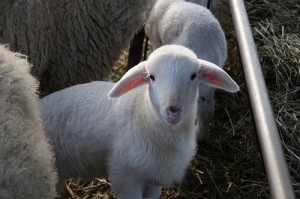
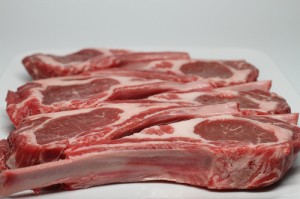
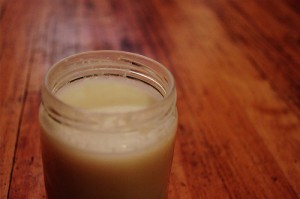
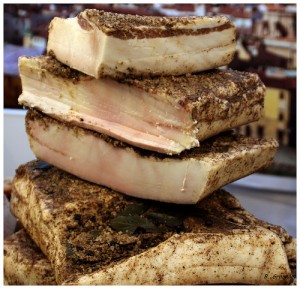
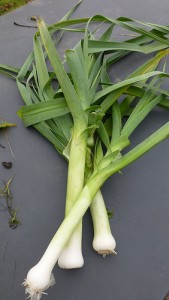
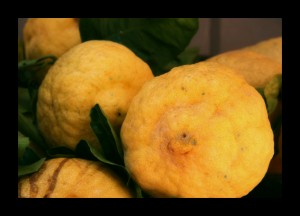
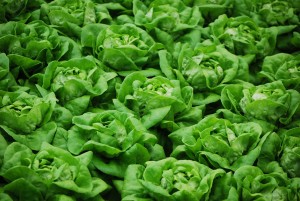
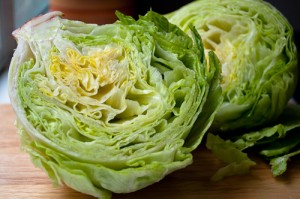
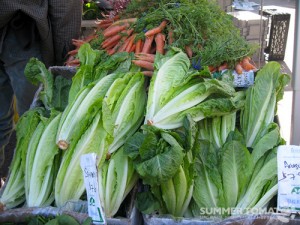
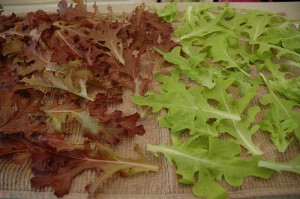
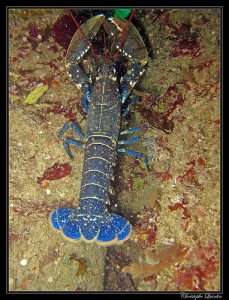
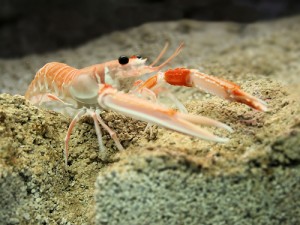
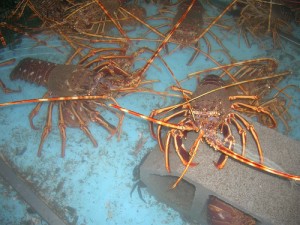

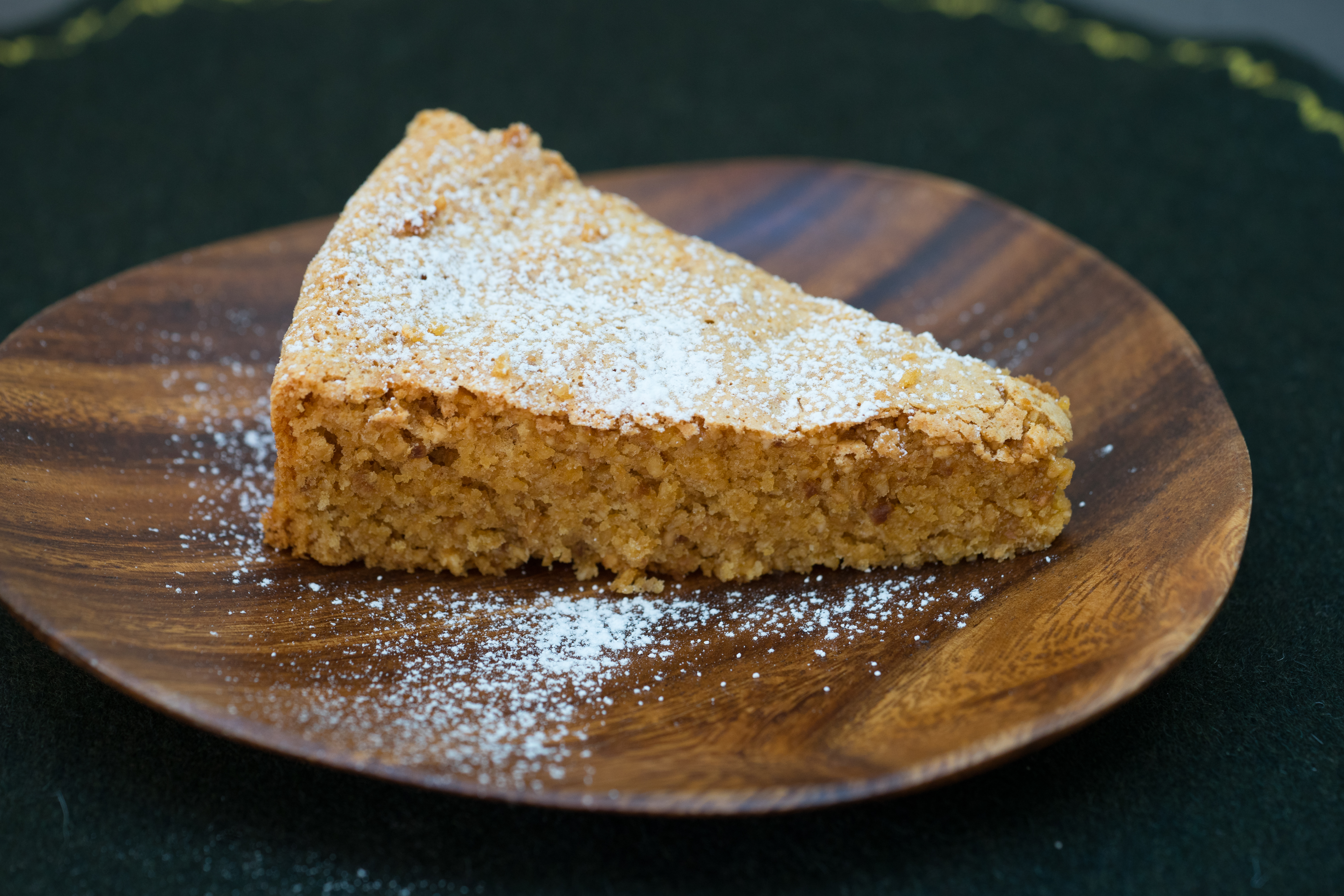
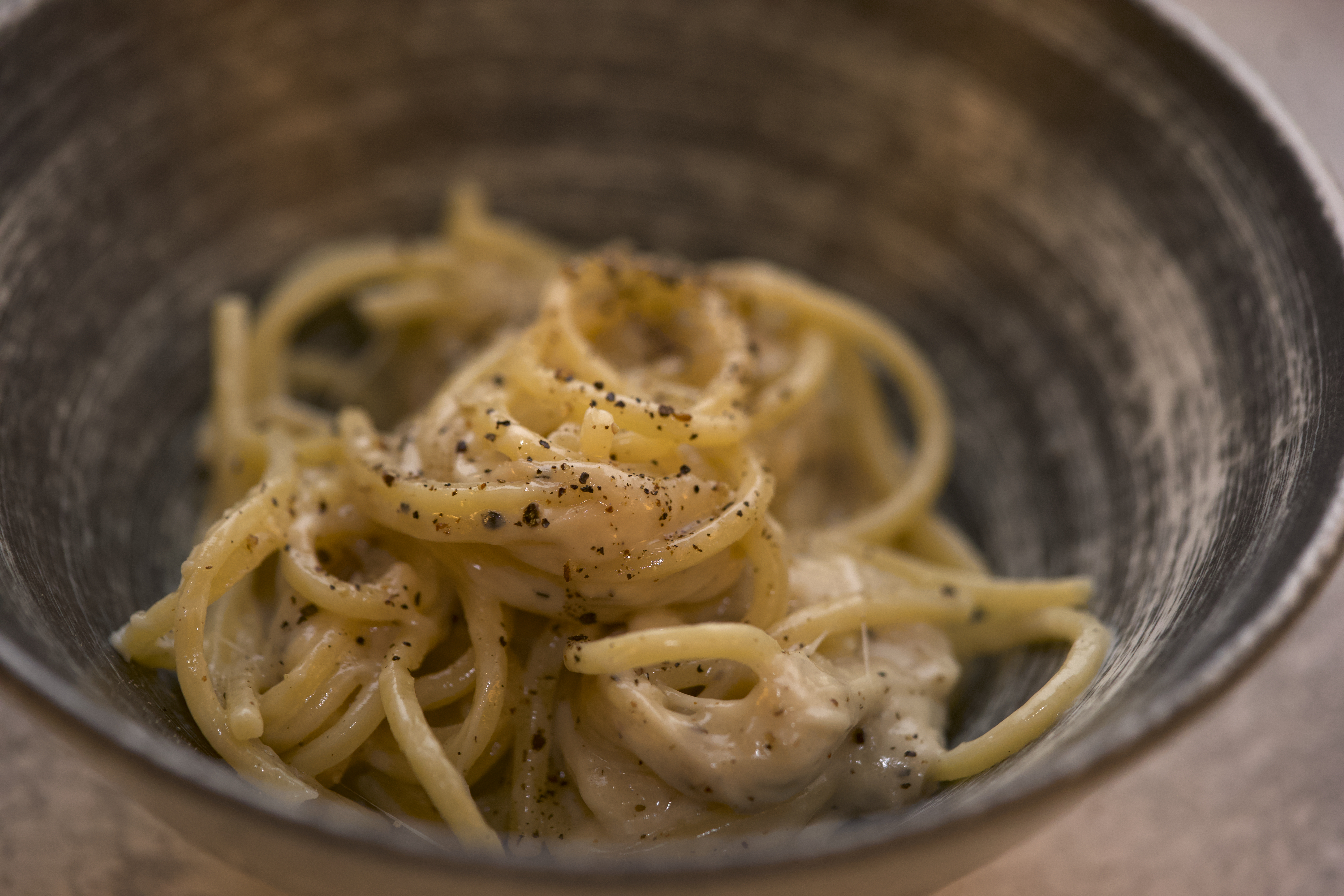
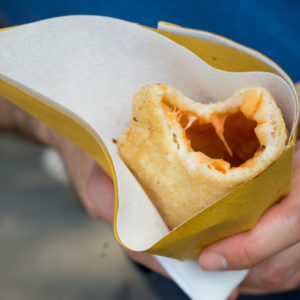
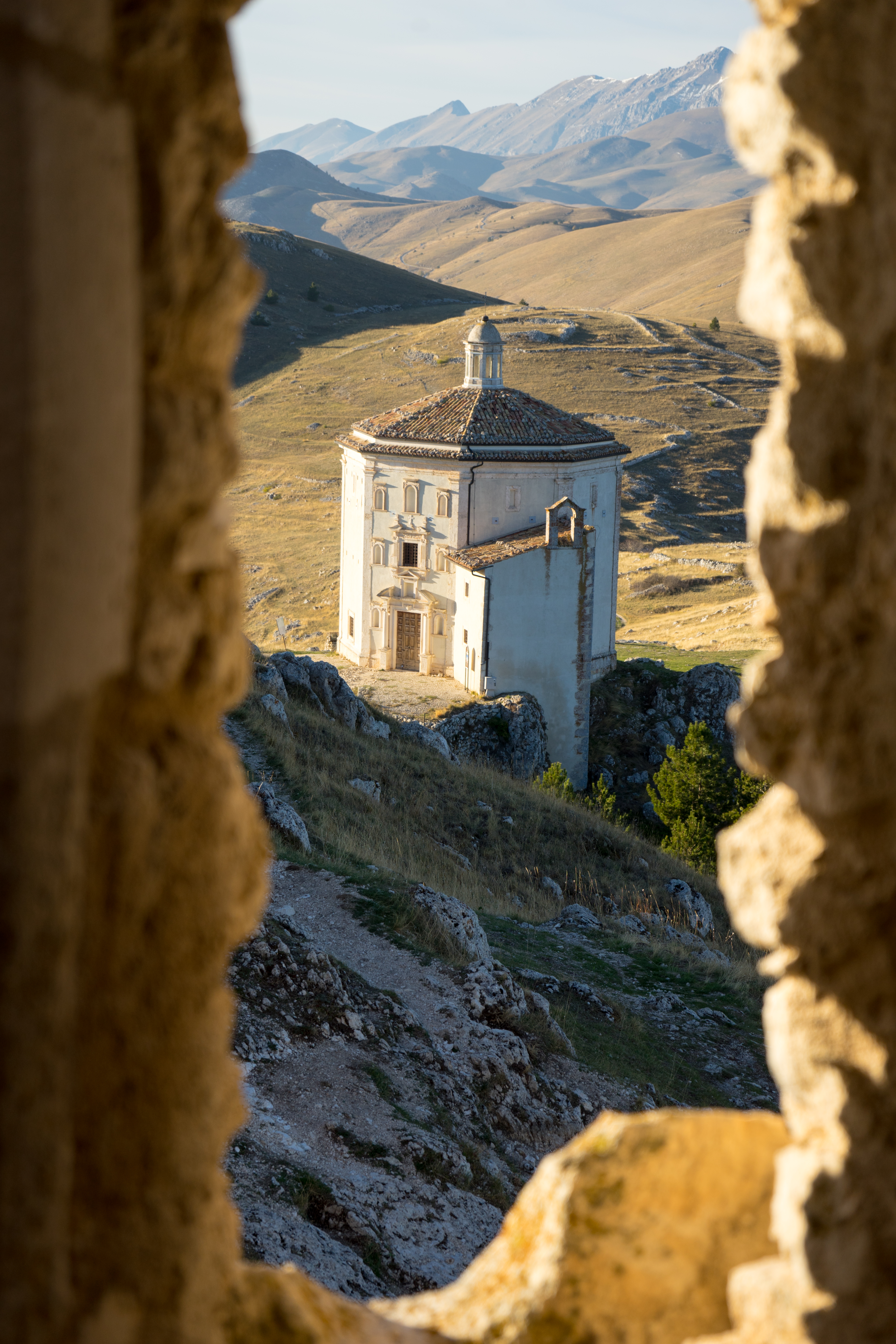
Leave a Reply